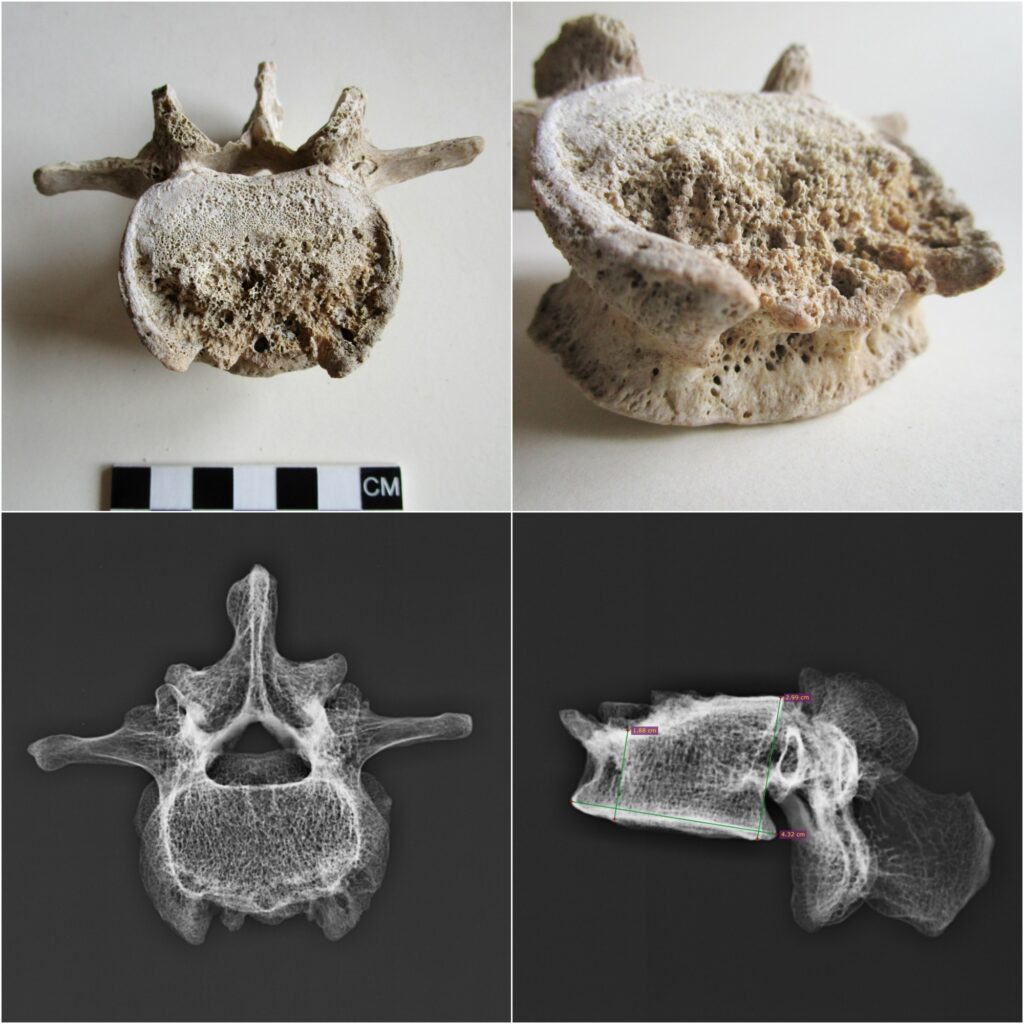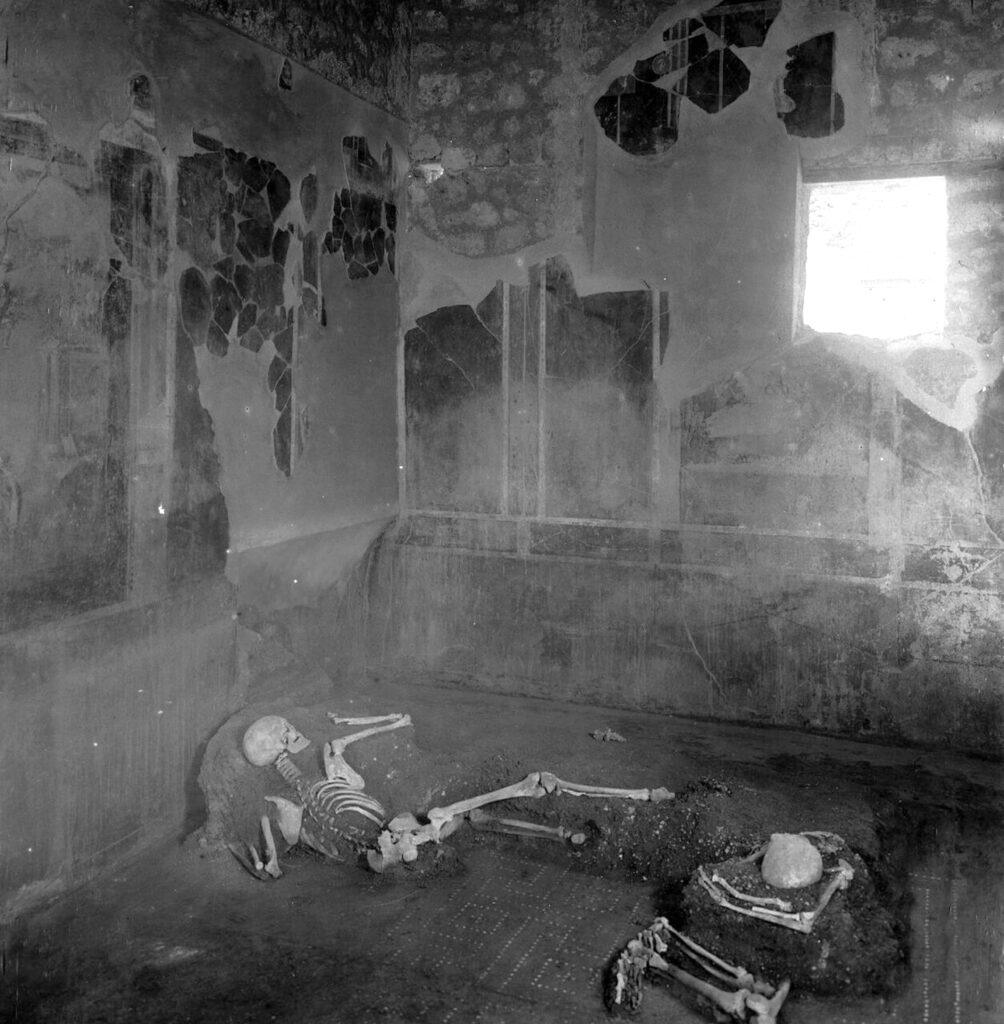Archaeology: First Pompeiian human genome sequenced
The first successfully sequenced human genome from an individual who died in Pompeii, Italy, after the eruption of Mount Vesuvius in 79 CE is presented this week in a study published in Scientific Reports. Prior to this, only short stretches of mitochondrial DNA from Pompeiian human and animal remains had been sequenced.

Gabriele Scorrano and colleagues examined the remains of two individuals who were found in the House of the Craftsman in Pompeii and extracted their DNA. The shape, structure, and length of the skeletons indicated that one set of remains belonged to a male who was aged between 35 and 40 years at the time of his death, while the other set of remains belonged to a female aged over 50 years old. Although the authors were able to extract and sequence ancient DNA from both individuals, they were only able to sequence the entire genome from the male’s remains due to gaps in the sequences obtained from the female’s remains.
Comparisons of the male individual’s DNA with DNA obtained from 1,030 other ancient and 471 modern western Eurasian individuals suggested that his DNA shared the most similarities with modern central Italians and other individuals who lived in Italy during the Roman Imperial age. However, analyses of the male individual’s mitochondrial and Y chromosome DNA also identified groups of genes that are commonly found in those from the island of Sardinia, but not among other individuals who lived in Italy during the Roman Imperial age. This suggests that there may have been high levels of genetic diversity across the Italian Peninsula during this time.
Additional analyses of the male individual’s skeleton and DNA identified lesions in one of the vertebrae and DNA sequences that are commonly found in Mycobacterium, the group of bacteria that the tuberculosis-causing bacteria Mycobacterium tuberculosis belongs to. This suggests that the individual may have been affected by tuberculosis prior to his death.
The authors speculate that it may have been possible to successfully recover ancient DNA from the male individual’s remains as pyroclastic materials released during the eruption may have provided protection from DNA-degrading environmental factors, such as atmospheric oxygen. The findings demonstrate the possibility to retrieve ancient DNA from Pompeiian human remains and provide further insight into the genetic history and lives of this population, they add.
###
Article details
Bioarchaeological and palaeogenomic portrait of two Pompeians that died during the eruption of Vesuvius in 79 AD, DOI: 10.1038/s41598-022-10899-1
Link to the article: https://www.nature.com/articles/s41598-022-10899-1
Press release from Scientific Reports.
———————————————————————————————————————————————————-
First Pompeiian human genome sequenced
Just published by Nature Scientific Reports: ‘Bioarchaeological and palaeogenomic portrait of two Pompeians that died during the eruption of Vesuvius in 79 AD’

The study entitled “Bioarchaeological and palaeogenomic portrait of two Pompeians that died during the eruption of Vesuvius in 79 AD” has just been published in the leading journal Nature Scientific Reports. This work was conducted by the Physical Anthropology Laboratory of the University of Salento, the Center of Molecular Anthropology for the study of Ancient DNA of the University of Rome “Tor Vergata”, the Laboratory of Molecular Psychiatry of the University of California at Irvine and the Lundbeck Foundation GeoGenetics Center of the University of Copenhagen.
Thanks to the support of the Archaeological Park of Pompeii, the skeletal remains of two individuals found in the Casa del Fabbro (House of the Blacksmith), one of the many exceptionally well-preserved buildings in Pompeii, were analyzed using a multidisciplinary approach: bioarchaeological and palaeogenetic.
The archaeological site of Pompeii, as is known, is one of the fifty-four UNESCO World Heritage Sites in Italy. Pompeii was a port city of the Roman Empire, entirely destroyed by the ashes of the eruption of Vesuvius in 79 AD.
For years, attempts have been made to genetically analyze the anthropological remains from this city, but their molecular analysis has always proved challenging. Today, thanks to the significant advances in paleogenetics in recent decades, it has been possible to recover ancient DNA from one of the two human samples analyzed. The work is of great scientific relevance as researchers have succeeded in determining the genetic profile of a Pompeian, which turns out to have close similarities with the surrounding population of central Italy in the Roman Imperial period.
Paleopathological analyses diagnosed the presence of tuberculous spondylitis (Pott’s disease) in one of the two individuals. This disease was endemic in Roman times, as reported in the works of Celsus, Galen, Caius Aurelianus and Areteus of Cappadocia, but it is rare in the archaeological record due to the fact that only in small percentages does it develop skeletal changes.
In conclusion, the results of this study provide valuable data on individuals who perished during the eruption of 79 AD, expanding the biological, paleopathological and genetic information, confirming the possibility of DNA analysis of human remains from Pompeii.


